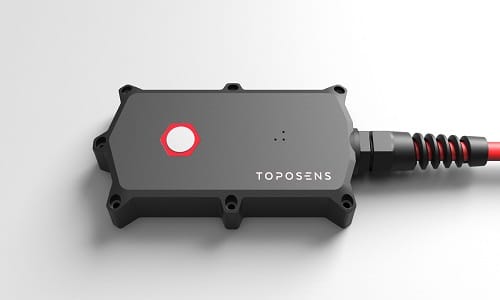Its advanced algorithms enable robust, cost-effective and accurate 3D vision for robotics, autonomous driving and consumer electronics

Toposens, a developer and manufacturer of sensor solutions has partnered up with Infineon Technologies AG to realise 3D obstacle detection and collision avoidance in autonomous systems.
The easy-to-integrate 3D ultrasonic sensor called ECHO ONE DK leverages sound, machine vision and advanced algorithms to enable robust, cost-effective and accurate 3D vision for applications such as robotics, autonomous driving and consumer electronics. It is based on Infineon’s XENSIV MEMS microphone IM73A135V01, which reduces development efforts and time-to-market. Additionally, it is low cost and energy-efficient compared to existing industrial 3D sensors. The new technology is ideal for improving the performance of automated guided vehicles (AGVs).
“Our XENSIV MEMS microphones enable the detection of sound pulses, so they are a critical component for 3D object localisation via ultrasound,” said Dr Roland Helm, Vice President and Head of Sensor Product Line from Infineon. “They offer a combination of exceptionally low noise and high signal-to-noise (SNR) ratio in the industry, resulting in improved reliability of the 3D data. This allows the detection of even the faintest ultrasonic echoes from distant, complex and small objects.”
“Making use of Infineon’s MEMS microphone, we were able to realise our new ultrasonic 3D sensor with a high overall sensitivity in the ultrasonic frequency spectrum, giving us the best range and widest opening angle,” said Tobias Bahnemann, CEO and co-founder of Toposens. “This enables our AGVs, robots or other applications to avoid collisions with all kinds of obstacles, even in the harshest environments, as proven by the IP57 protection rating.”
Lighting conditions, reflections and weather affect the performance of existing sensor technologies. However, Toposens sensors are immune to the above as they rely on echolocation to generate real-time 3D point clouds. This guides autonomous systems in even the most challenging conditions and allows consumer electronics to recognise their surroundings. Additionally, ultrasonic sensing reduces the high number of false positives and false negatives that can occur when using optical sensors and decrease system efficiency.
ECHO ONE DK allows easier and more flexible sensor evaluation. For easy integration, CAN is offered as a communication interface. There are three software packages: a C++ library, ROS support and a cross-platform 3D data visualiser. In addition, a separate interface adapter is available for firmware updates.






